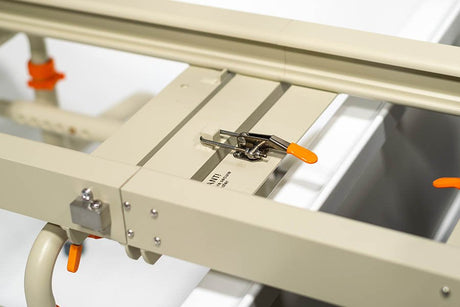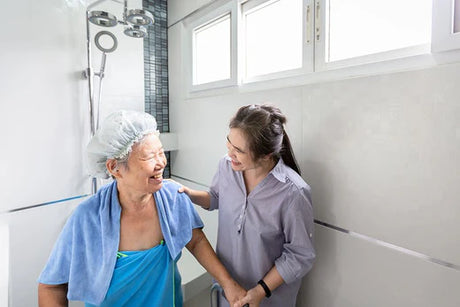1 – Listen to what they want
No matter the degree of mobility impairment, your loved one deserves to have input into how they use the bathroom each day. While the occupational therapist will provide the guidelines and plan based on what’s possible, there are many finer details that can be left up to the individual – do they take their own shirt off or does someone else? Do they face towards or away from the shower head? The elements of bathroom use that can be left up to them will depend on their injury and mobility level. The idea is that you are enabling them to voice their wishes or concerns and making plans accordingly.
2. Make use of equipment to allow self bathing if possible
3. Create moments of alone time in the bathroom
The bathroom is the last place any of us want company when we’re going about our routine, so even small breaks from a carer can improve the experience for someone going through injury rehabilitation. What these moments are depends entirely on your loved ones own care plan and OT or PT’s direction. Some of the following may not be applicable, but some common examples are:
- Your loved one is left to use the toilet in between preparing and cleaning up.
- They have the upper body strength and control to bathe themselves without help once inside the shower.
- Brushing teeth.
- Drying off their top half.
- Relaxing in the shower, even if not actively cleaning themselves.
- Brushing or styling hair.
Always make sure that any change to a bathroom routine is made with the help of your Occupational Therapist. They’ll be able to keep everyone safe and will provide alternative suggestions if it’s not yet safe to leave your loved one alone to conduct bathroom activities.
4. Introduce more independence during stages of recovery

5. Stick to rehabilitation plans
Improvements are usually made in small amounts across longer periods. Prioritise the therapist’s rehabilitation plan, and make sure they know what bathroom independence is most important to your loved one.
Further reading on the topic
If you’re interested in learning more about this topic, you can find useful information via the following resources:
- Independence and Being Home Alone with a Spinal Cord Injury – Craig Hospital
- 5 Reasons To Empower Your Teen To Manage Their Own Bathroom Routine – Showerbuddy Blog
- Tom’s story: Walking with a spinal cord injury and independence – The Back Up Trust


























![Toilet Training A Young Child With Mobility Challenges [And How A Shower Chair Can Help]](http://shower-buddy.com/cdn/shop/articles/toilet-training-disabled-child_520x500_a90e5234-d372-435d-aa56-8da15dd3836c.webp?v=1722557239&width=460)
























